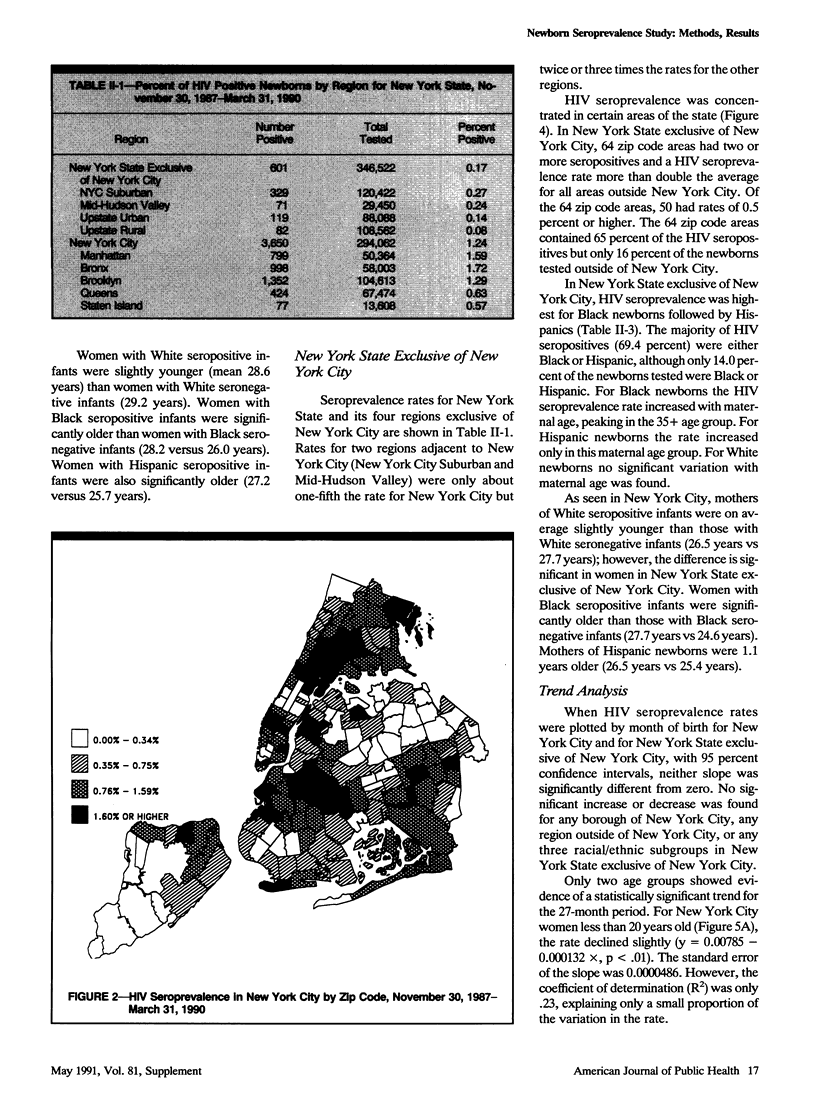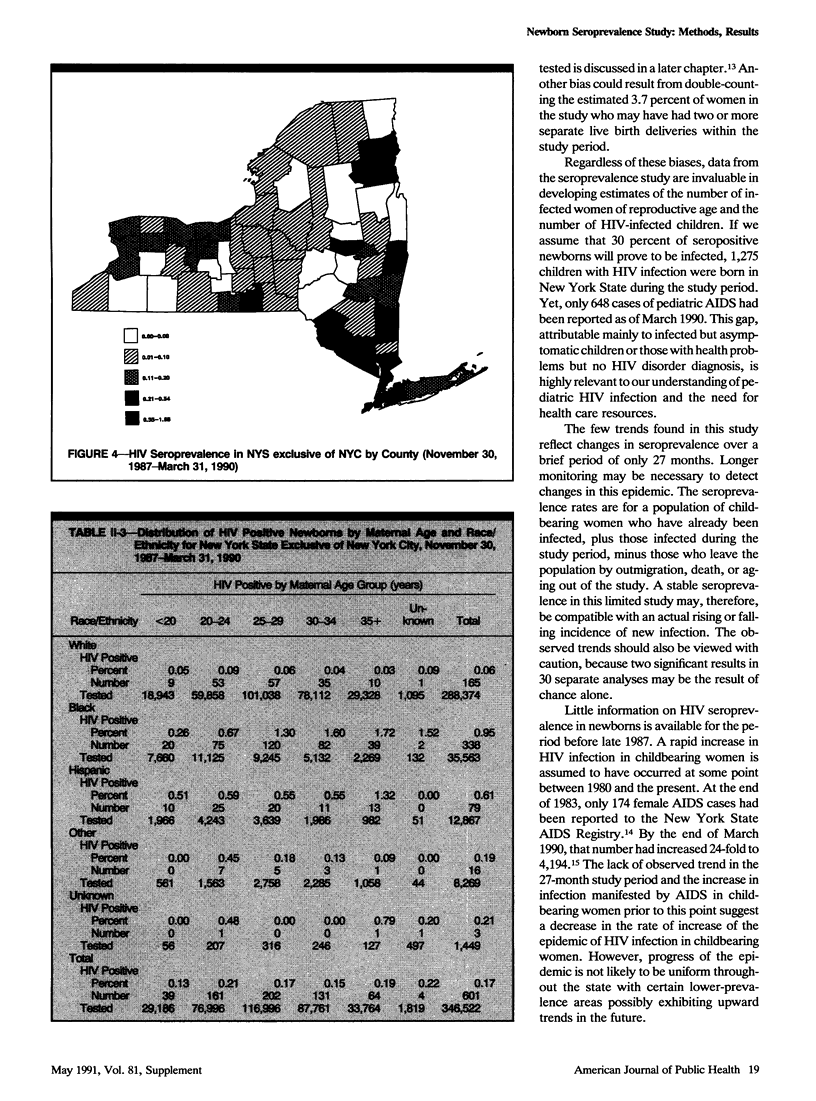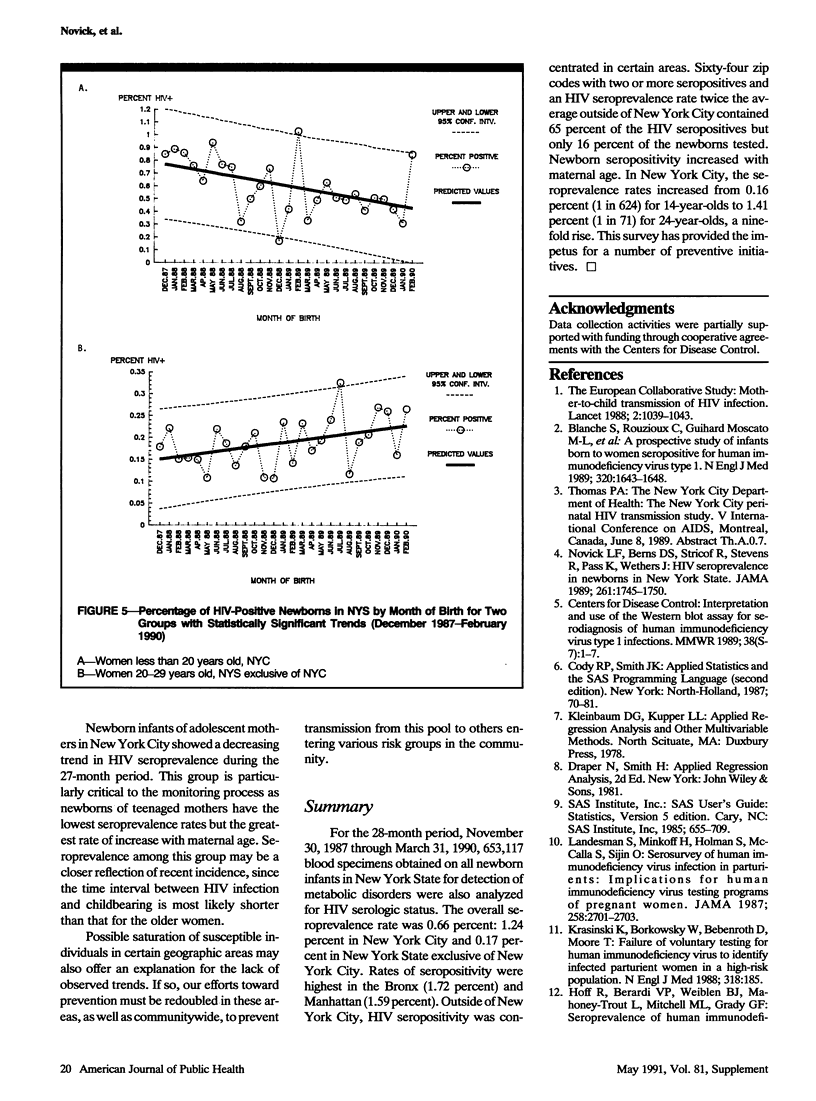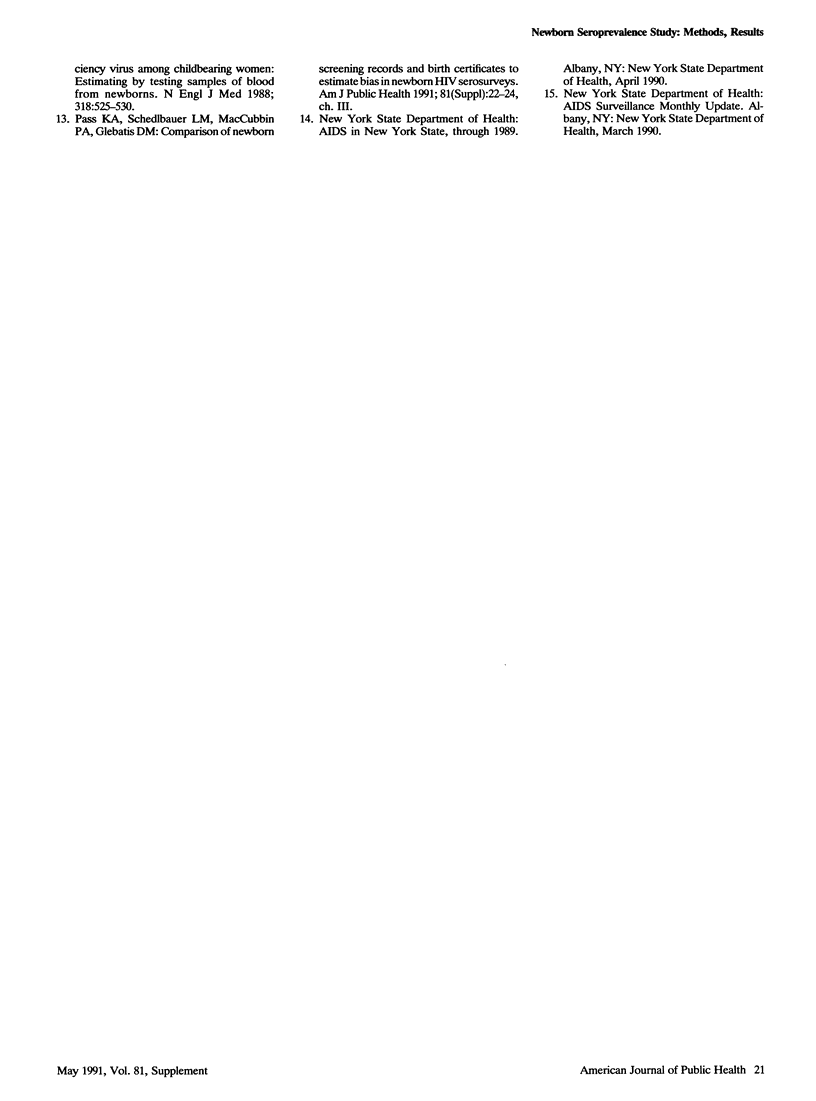Abstract
For the 28-month period, November 30, 1987 through March 31, 1990, 653,117 blood specimens obtained on all newborn infants in New York State for detection of metabolic disorders were also analyzed for HIV serologic status. The overall seroprevalence rate was 0.66 percent: 1.24 percent in New York City and 0.17 percent in New York State exclusive of New York City. Rates of seropositivity were highest in the Bronx (1.72 percent) and Manhattan (1.59 percent). Outside of New York City, HIV seropositivity was concentrated in certain areas. Sixty-four zip codes with two or more seropositives and an HIV seroprevalence rate twice the average outside of New York City contained 65 percent of the HIV seropositives but only 16 percent of the newborns tested. Newborn seropositivity increased with maternal age. In New York City, the seroprevalence rates increased from 0.16 percent (1 in 624) for 14-year-olds to 1.41 percent (1 in 71) for 24-year-olds, a ninefold rise. This survey has provided the impetus for a number of preventive initiatives.
Full text
PDF






Selected References
These references are in PubMed. This may not be the complete list of references from this article.
- Blanche S., Rouzioux C., Moscato M. L., Veber F., Mayaux M. J., Jacomet C., Tricoire J., Deville A., Vial M., Firtion G. A prospective study of infants born to women seropositive for human immunodeficiency virus type 1. HIV Infection in Newborns French Collaborative Study Group. N Engl J Med. 1989 Jun 22;320(25):1643–1648. doi: 10.1056/NEJM198906223202502. [DOI] [PubMed] [Google Scholar]
- Krasinski K., Borkowsky W., Bebenroth D., Moore T. Failure of voluntary testing for human immunodeficiency virus to identify infected parturient women in a high-risk population. N Engl J Med. 1988 Jan 21;318(3):185–185. doi: 10.1056/nejm198801213180313. [DOI] [PubMed] [Google Scholar]
- Landesman S., Minkoff H., Holman S., McCalla S., Sijin O. Serosurvey of human immunodeficiency virus infection in parturients. Implications for human immunodeficiency virus testing programs of pregnant women. JAMA. 1987 Nov 20;258(19):2701–2703. [PubMed] [Google Scholar]
- Novick L. F., Berns D., Stricof R., Stevens R., Pass K., Wethers J. HIV seroprevalence in newborns in New York State. JAMA. 1989 Mar 24;261(12):1745–1750. [PubMed] [Google Scholar]
- Pass K. A., Schedlbauer L. M., MacCubbin P. A., Glebatis D. M. Comparison of newborn screening records and birth certificates to estimate bias in newborn HIV serosurveys. Am J Public Health. 1991 May;81 (Suppl):22–24. doi: 10.2105/ajph.81.suppl.22. [DOI] [PMC free article] [PubMed] [Google Scholar]


